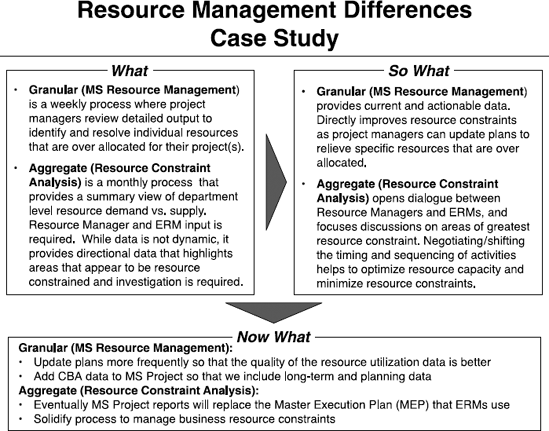4.4. EPMC WORKING DOCUMENT ON PORTFOLIO RESOURCE OPTIMIZATION
Optimizing resources is about balancing the demand for resources with the supply.
Figure 4.3. Figure 4.3

The primary aim of resource optimization is to create an open dialogue, based on factual analysis, between the portfolio office and business project sponsors (the decision makers).
4.4.1. Demand-Side Resource Management
Resist trying to control the detail. Only model reality as far as it's relevant for strategic planning. Focus planning and management efforts on the "boulder" projects and some of the major "rocks."
Boulders: strategic transformational projects that touch multiple departments, with multiyear timelines and that aim to deliver significant value to the business
Rocks: projects that may only touch a few departments, but still require significant resources to deliver major benefits
Pebbles: projects that may only involve one department or function and/or with in-year timelines
Sand: all those other projects (such as bug-fixes or feature enhancements) that are usually not part of a portfolio but, unless properly managed, will consume all available resources indefinitely
For ease of planning and management, portfolio resources can be grouped into three categories:
Skills: availability of sufficient people with the right skills and experience
Technology environment: the capacity of the computer systems or platforms ...
Get Project Portfolio Management: A View From The Management Trenches now with the O’Reilly learning platform.
O’Reilly members experience books, live events, courses curated by job role, and more from O’Reilly and nearly 200 top publishers.

